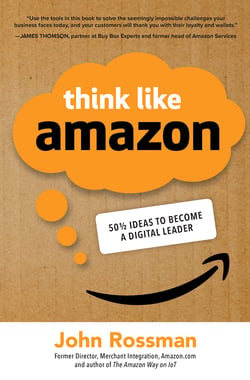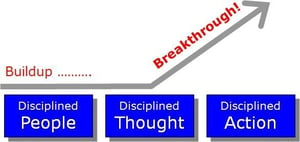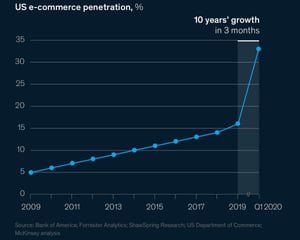 You’ve probably heard this before when you’ve been called up to achieve change in your company, create an innovation or working on a project of some magnitude, “Why didn’t we think of that to begin with?” Or, “Where was this question when we started this project?”
You’ve probably heard this before when you’ve been called up to achieve change in your company, create an innovation or working on a project of some magnitude, “Why didn’t we think of that to begin with?” Or, “Where was this question when we started this project?”
Judge a man by his questions rather than his answers. ~ Voltaire
There are no dumb questions.
When it comes to completing a project, and especially an innovation, often the simplest and easiest questions to have answered get overlooked or remain unanswered.
In John Rossman’s Think Like Amazon: 50 1/2 Ideas to Become a Digital Leader he recommends a solution.
Write up your Frequently Asked Questions by customers and internal users at the outset so they help speed up the process and eliminate unmet needs and key friction points.
Frequently Asked Questions
Proactively writing FAQs force you and your team to think through the key questions about your product to pre-answer the big questions stakeholders are likely to have. Creating a FAQs document forces you to put yourself in the role of your customers using the product and consider all the challenges and confusion they might have using it. It should be the inspiration behind designing a fully self-service, confusion-free product.
 FAQ’s should be written once you’ve done a narrative and press release.
FAQ’s should be written once you’ve done a narrative and press release.
The purpose of FAQs is to add more details to the press release and answer other business and execution questions necessary to launch. You can choose to make this a separate document or add it to the end of your press release document.
A good set of FAQs helps keep the press release document short and focused on what the customer gets. Build FAQs around resolutions to issues and answers to questions that come up when you write your press release. What questions come up as you address the process of socializing the press release? Good FAQs outline what the product is good for, how your customers will leverage it, and why customers will be delighted with it.
Good FAQ’s force you into the role of playing the customer using the product. Consider all the challenges or the confusion they might have. The other inspiration it provides is to create a fully self-service, confusion free product.
Idea #46: Develop insights and empathy for your users and other involved parties by writing FAQs. Make these available for anyone in the organization or involved in the initiative to both read and contribute to. Do this before you start developing and keep it up to date. Make it thorough. The only dumb question is the unasked one.
FAQ Example
 In chapter 46 of Think Like Amazon: 50 1/2 Ideas to Become a Digital Leader FAQs: Answer Others’ Questions for Your Benefit. Rossman provides an incredible example of FAQ’s a company he worked with developed for their product, https://www.modjoul.com/. It’s a wearable platform to provide real time data on worker safety. It has applications for today’s COVID environment as well.
In chapter 46 of Think Like Amazon: 50 1/2 Ideas to Become a Digital Leader FAQs: Answer Others’ Questions for Your Benefit. Rossman provides an incredible example of FAQ’s a company he worked with developed for their product, https://www.modjoul.com/. It’s a wearable platform to provide real time data on worker safety. It has applications for today’s COVID environment as well.
Rossman indicates Modjoul keep their FAQs on their intranet, continually updating them. Theirs go beyond a question (Q) and an answer (A), to include a Discussion (D). You won’t find their FAQ’s on their website, however in chapter 46 Rossman provides an extensive list. If you like this idea, I’d suggest going to the book and reading through them. You’ll get a lot of ideas.
Here’s just one short example from the book:
Q6: How type of activities does the belt monitor?
A6: Human location, movement, and ambient environment. There are eights sensors and a GPS in the belt. These sensor values are processed and placed into one of seven activities, then further broken down into 1 of nearly 50 associated metrics.
D6: In my opinion, the real important takeaway of this question is how many times it gets asked directly or indirectly. People want to know what the belt does and what types of data it gathers. This information is a huge driver of our data models and our new features that are rolled out.
Reading the chapter and the examples made me realize the significance this can have on the team building the innovation/change, and the impact it will have on customers.
Questions for YOU to Consider
- Do you have a project or situation that FAQs document might clarify and inform?
- Have you had projects where different perspectives were not considered that created issues?
- Where do projects of initiatives typically go wrong for you? How could writing FAQs help?
Is your business looking for help stirring ideas, providing a catalyst for growth, measuring accountability? We can help. Please contact us today to schedule an exploratory meeting.
Growth demands Strategic Discipline.
 To build an enduring great organization, requires disciplined people, disciplined thought, disciplined action, to produce superior results, and make a distinctive impact in the world.
To build an enduring great organization, requires disciplined people, disciplined thought, disciplined action, to produce superior results, and make a distinctive impact in the world.
Discipline sustains momentum, over a long period of time, laying the foundations for lasting endurance.
-2.jpg?width=300&name=3%20Disciplines%20of%20Execution%20(Strategic%20Discipline)-2.jpg) A winning habit starts with 3 Strategic Disciplines: Priority, Metrics and Meeting Rhythms. Forecasting, accountability, individual, and team performance improve dramatically.
A winning habit starts with 3 Strategic Disciplines: Priority, Metrics and Meeting Rhythms. Forecasting, accountability, individual, and team performance improve dramatically.
Meeting Rhythms achieve a disciplined focus on performance metrics to drive growth.
Let Positioning Systems help your business achieve these outcomes on the Four most Important Decisions your business faces:
|
DECISION |
RESULT/OUTCOME |
|
PEOPLE |
|
|
STRATEGY |
|
|
EXECUTION |
|
|
CASH |
|
Positioning Systems helps mid-sized ($5M - $250M) business Scale-UP. We align your business to focus on Your One Thing! Contact dwick@positioningsystems.com to Scale Up your business! Take our Four Decisions Needs Assessment to discover how your business measures against other Scaled Up companies. We’ll contact you.
 NEXT BLOG – People
NEXT BLOG – People
In McKinsey Quarterly’s The Quickening, a graph shows in the 3 months since COVID19, US e-commerce penetration experienced 10 years growth in just 3 months. Most of us fear technology will leave our businesses in the dust. My son’s experience at the Mayo Clinic in Rochester, MN should give you hope on People’s influence in our next blog.






.jpeg?width=150&height=135&name=Hand%20with%20marker%20writing%20the%20question%20Whats%20Next_%20(1).jpeg)

